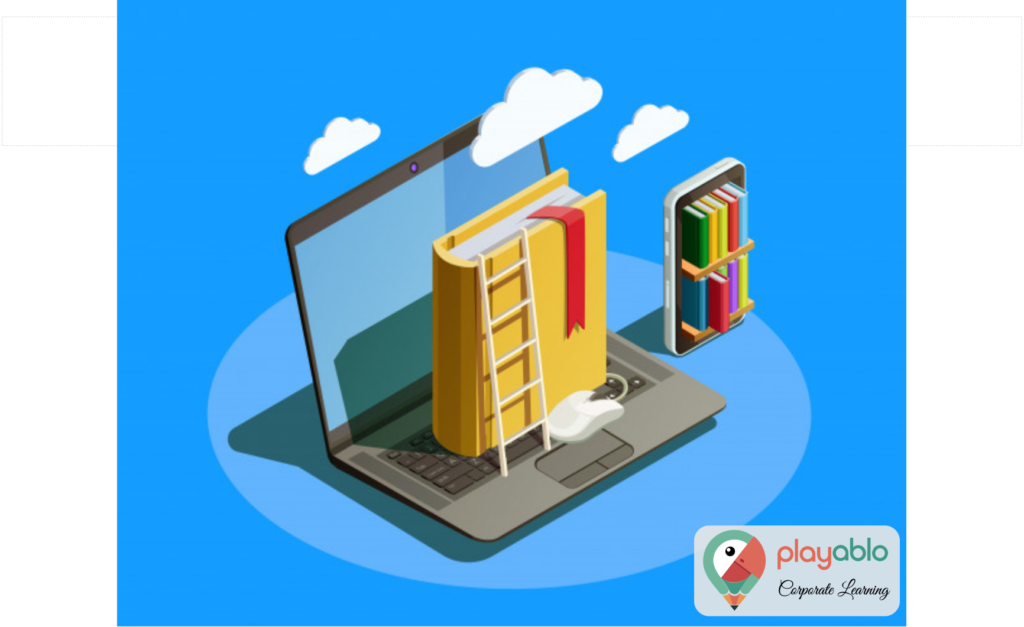“Which Is The Bigger Number Five Or One … One Army, A Real Army, United Behind One Leader With One Purpose” — Robert Baratheon, Game of Thrones. What the Westerosi king meant here was: that a dispersed army, however large it may be, does not stand a chance against a united army. In other words, a fist is more powerful than five separate fingers. Well, we believe this quote is quite apt for your workforce, especially when it comes to learning. An enterprise LMS (learning management system) performs the best when it is a part of the business ecosystem, rather than standalone silos. This is where the concept of integrating LMS makes an entry – to share data and smoothen your business work flow.
Integrating LMS and Why is it Important?

Enterprise learning ecosystems are defined as agile and intelligent training structures that engage your entire workforce — even if they are scattered in different parts of the globe. In fact, an enterprise LMS ecosystem enables the HRM leadership to keep track of performance management in real-time — by tracking individual and program progress, alongside the associated business impact. But how do you achieve all of this without pulling your current learning management system off the record?
For instance, suppose your organization already owns a full-fledged enterprise LMS, which is somewhat rigid but has primary and secondary technical domain skills. But now, you wish to shift to the more flexible cloud-based learning platform. Then, what’s the way out? Since moving away from a traditional setup is complicated, the best way forward is to augment your LMS.
In fact, as per recent trends, “For successful business results, extended enterprise learning platforms must be integrated with an organization’s broader tech stack. Integrations are critical because they ensure that an enterprise LMS seamlessly “snaps” into your ecosystem so it can leverage available data and functionality.”
Several feature-rich cloud-based learning systems have stepped up in the LMS market in recent years. They offer highly specialized enterprise LMS solutions. However, it isn’t easy to think of replacing an established enterprise LMS with a cloud-based platform, even if it offers more advanced features.
This is when augmentation fits in. The integrating LMS capability allows a new enterprise LMS to complement traditional and existing software. It ensures a mutually beneficial coexistence — leading to sustainability, both for the training platform and the business as a whole.
Table of Contents
How to Get Started with Integrating LMS?

Let us assume that you already have a core enterprise LMS in place. However, if it does not have the integrating LMS feature included in the package, developers will manually integrate systems, spending time, money, and resources in doing so. Now, if you have the option to interlink your existing LMS with other systems like HRM and performance management, you can streamline and automate many critical business processes.
You can even choose to create integrating LMS processes using APIs of other applications and services to smoothen the onboarding process, track learner engagement, and synchronize between different apps.
Now, your next question might be: how to enhance your existing, core LMS with dynamic, modern functionalities? What are the key criteria or main pillars of integrating LMS? Or what are the niche areas where enterprise LMS integration can prove handy? Let’s check them out:
Learner audience
In any organization, there are different categories of learning audience. While some teams may need targeted and instant knowledge, others can require generic, simpler sessions. The teams who have a direct impact on your revenue are usually considered to be the critical learning groups. Hence, the decision to purchase an LMS is usually more geared toward the “for-profit” segment of a company.

Now, for different learner groups, your training formats should differ as well.
For instance, the forever busy internal sales teams do not have the luxury to spend long hours in training rooms. For them, you need to devise learning formats that are timely, quick, mobile, and social. Built-in gamification features in your LMS, coupled with rewards and recognition, motivate them to complete courses on-time. Again, external sales teams, who have to manage their own businesses, prefer highly accessible content.
Ad: PlayAblo’s Enterprise-Grade Micro-Learning platform is built for millennial learners. Micro-Learning, along with assessments and gamification features, ensures learning outcome measurement along with sustained engagement.
Find out more and request a custom demo!
As for your customers, a continuous customer onboarding process can transform a one-time purchase into repeat sales and long-term brand loyalty. Finally, corporate leadership might want to access specialized third-party content — which is a blended mix of online and offline modules. In this case, you can opt for standalone content systems that work in tandem with the core enterprise LMS — to coordinate schedules, track completion records, and issue certifications.
Usability
Both enterprise LMS administrators and learners want to thrive in a learning environment, which is usable. Most of the traditional LMS lack this feature, which includes user interface design, user navigation, customization, and content delivery — coupled with mobile and social optimizations. However, the user interface of cloud enterprise LMS providers looks like commercial platforms.
Learning experience platforms, embedded with artificial intelligence, offer recommendations based on user search history and preferences, profile details, tags, subjects of interest, and general behavior. These custom learning experiences can work in silos or can be integrated with your existing enterprise LMS.
On the other hand, specialized mobile learning apps can also be partially integrated with your current enterprise LMS to distribute user and completion data across different systems.
Content

Content is the main pillar of every LMS platform. A diverse content library is provided by a learning management system to address varied user needs. Again, with the help of the cloud, mobile, and social technologies, you can generate instant, on-demand, and micro-content modules –– resulting in easier access, increased engagement, and faster absorption rates.
Several leading enterprise LMS providers offer multi-format libraries that can operate as stand-alone modules or can function as an integrated part of an existing LMS solution. Again, live virtual classrooms can be incorporated as individual applications or while integrating LMS.
Multimedia learning tools like clips, audio, live video chat, webinars, and screen sharing, result in full-fledged digital video libraries. Embedded or linked videos are an option. However, you can also choose to build a completely mobile video training experience with enterprise LMS software.
Ad: PlayAblo’s Enterprise-Grade Micro-Learning platform is built for millennial learners. Micro-Learning, along with assessments and gamification features, ensures learning outcome measurement along with sustained engagement.
Find out more and request a custom demo!
Learning Analytics
We do know that any LMS has the feature to generate reports on course statistics and learner progress. But traditional learning management systems do not have added features like interlinking training data with other operational and business data — to enable organizations to make smarter decisions.
Enterprise LMS augmentation with CRM allows organizations to track, organize, and analyze customer and prospect data, including training. Integrating LMS with back-office applications enables you to forecast data, automate scheduling, and measure KPIs.
Enterprise LMS: What are the Go-to Approaches for Integrating LMS?
There are a variety of approaches to integrating LMS. You can have an open micro-API library that comprises different available scripts. You can then automate the LMS integration with your existing systems. Or go for pre-built connection APIs, that you can use to automate the different types of integrations outlined above.
You can turn on pre-built micro-API connectors (also called hooks, that expose specific features of an enterprise LMS (used as a microservice) by checking a box and entering the appropriate API “code”– to interlink the two systems.

We also recommend that one takes care of integrating LMS with industry-standard handshake frameworks. For instance, Oauth 2.0, to ensure that the exchange of information & feature exposure takes place securely as well. They also maintain the entitlement aspects of an LMS.
You can also have a private API library or web services that will require your enterprise LMS provider to build and configure the integration. This method might be a bit costly but is necessary with complex integrations. Finally, you can go for flat files (txt, CSV) to transfer data through a secure FTP folder. You can do this in batches at predetermined time intervals. HRIS and ERP integration generally use this process.
One major aspect of integrating LMS can be with a larger knowledge management system (More on an integrated enterprise LMS-CMS-KMS & their benefits here). Knowledge management encompasses not mere structured learning. It also formulates an indexed, semantically searchable learning eco-system that combines knowledge aspects from structured, semi-structured & unstructured information within an organization. An LMS that can handle all types of data usually brings in enormous value in such a scenario, in successfully integrating with a “Knowledge” ecosystem.
The Bottom Line
In the current learning market, you cannot expect to have a single LMS solution that delivers all your required learning needs (unless there is one!!) functionalities. We recommend you invest in contemporary solutions that co-exist with your existing technology stack.
You can, of course, think about an all-in-one enterprise LMS as well — but in this case, the owner/subscription costs will increase. For a smarter solution, you can use a combo of an old-school talent management enterprise LMS and a modern cloud learning solution. Reconsider this. It is confusing why one would want to integrate multiple enterprise LMS. The idea is integrating LMS with other learning-related / HR / career-related systems.







I stumbled upon this I’ve found It absolutely useful and it has helped me out loads. I hope to contribute &; aid other users like its helped me. Great job.
Hi my friend! I want to say that this article is amazing, nice written and include approximately all significant infos. I would like to see more posts like this.